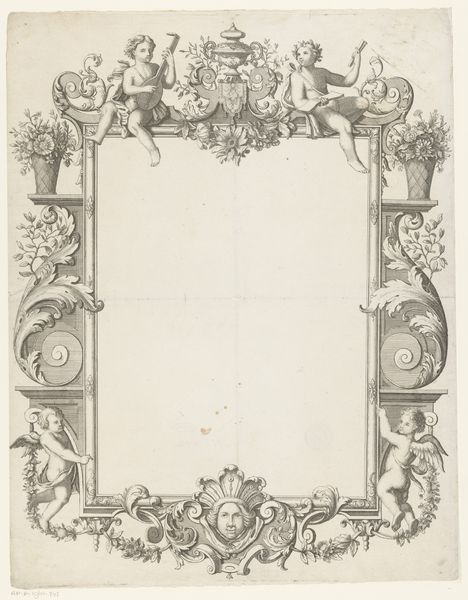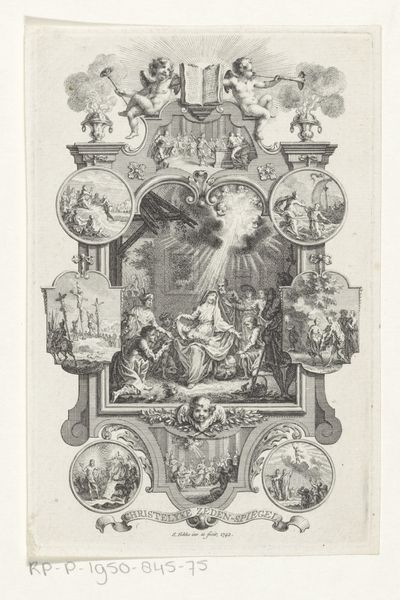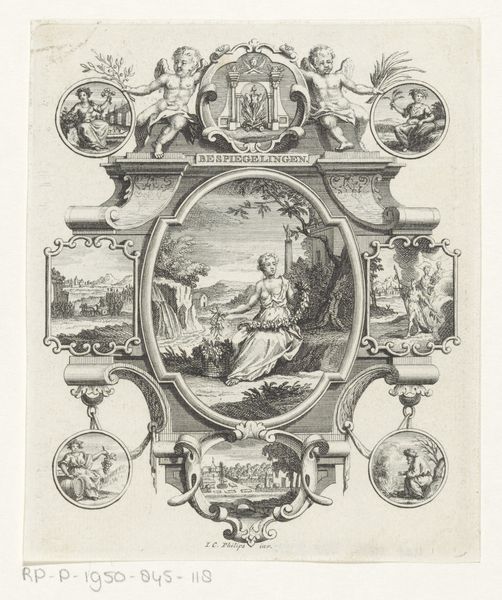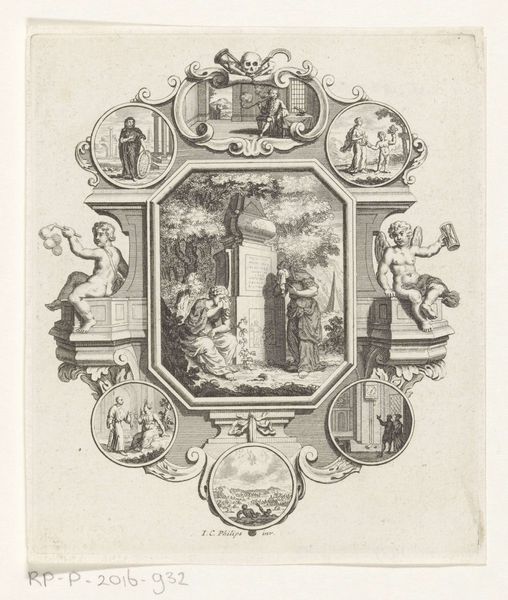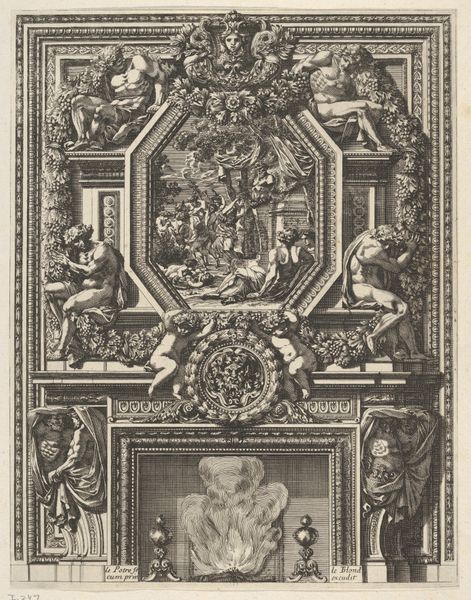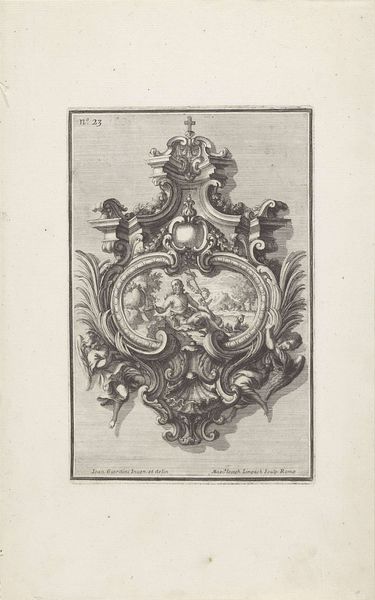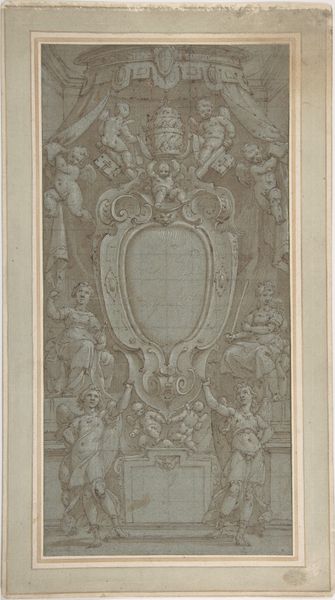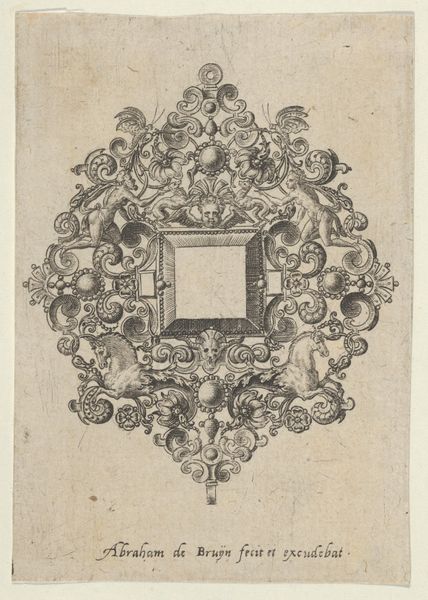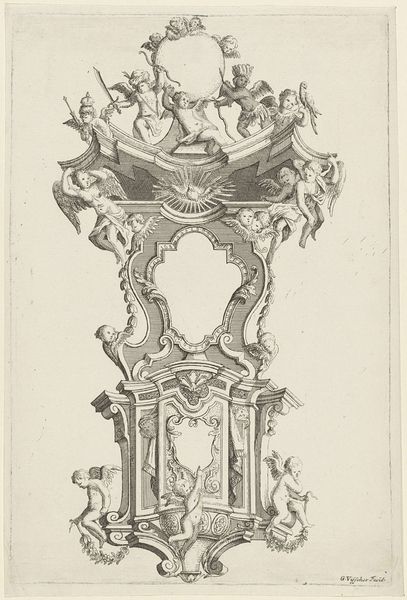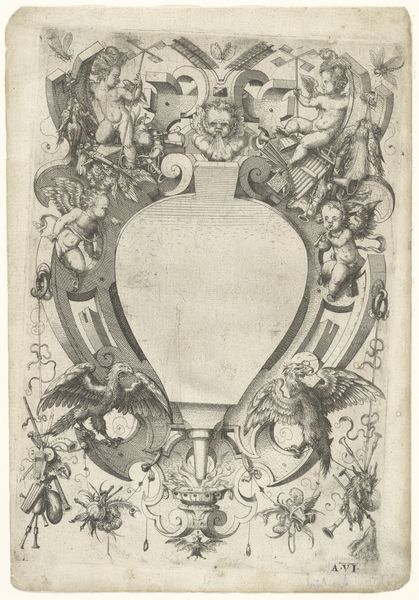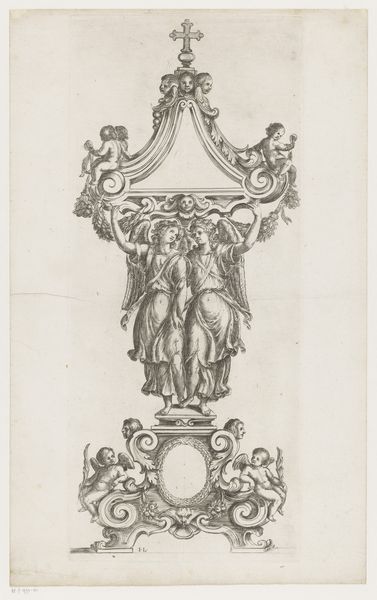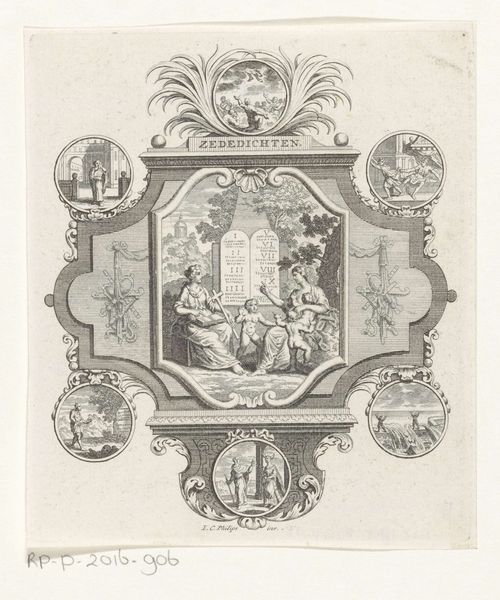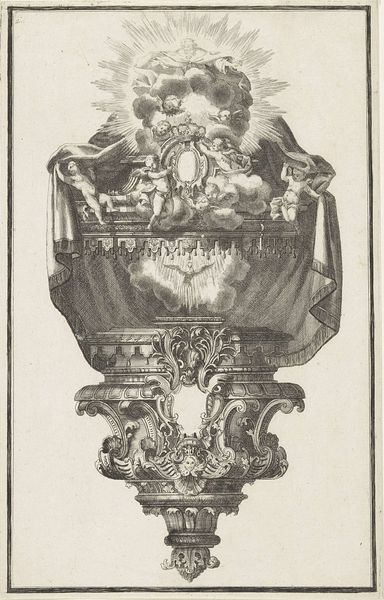
print, engraving
#
allegory
#
pen drawing
# print
#
11_renaissance
#
history-painting
#
northern-renaissance
#
engraving
Dimensions: height 259 mm, width 178 mm
Copyright: Rijks Museum: Open Domain
Editor: Here we have Jost Amman’s "Titelpagina met cartouche Hemel," created in 1568. It's an engraving, and what immediately strikes me is the overwhelming symbolism—globes, suns, stars, and chubby cherubs! It all feels very... celestial and orderly, but also a little bit overwhelming. What do you see in this piece? Curator: You’re right, it’s incredibly dense. For me, the overwhelming nature of the symbolism points to the sociopolitical function of knowledge in the Renaissance. Consider the era – European exploration was exploding, purportedly opening up new frontiers, yet tightly controlled and visually disseminated through these kinds of allegorical prints. Editor: So, you're saying it’s not just a celebration of knowledge, but also a carefully curated display of power? Curator: Exactly. Notice how the cherubs, often symbols of innocence and divine love, are actively engaged in mapping and controlling these globes. Doesn’t that speak to the way nascent scientific advancement was often intertwined with colonial ambition, masking extraction under a veneer of enlightenment? What about the sun? What's its prominence saying? Editor: Hmm, perhaps positioning Europe as the center of enlightenment? Or at least, as the source of illuminating knowledge? It’s a much more critical read than I initially considered. I was simply captivated by the craftsmanship! Curator: The craftsmanship *is* stunning. But remember, the power of art often lies in its ability to simultaneously conceal and reveal. We have to question what is included, but more importantly, what’s *not* included or marginalized within these carefully constructed representations. Editor: That’s fascinating. I never thought about how Renaissance art could be seen through a postcolonial lens like that. Thank you! Curator: Of course. It highlights how vital it is for contemporary theory to examine established art historical canons, even when those canons present seemingly neutral imagery.
Comments
No comments
Be the first to comment and join the conversation on the ultimate creative platform.
